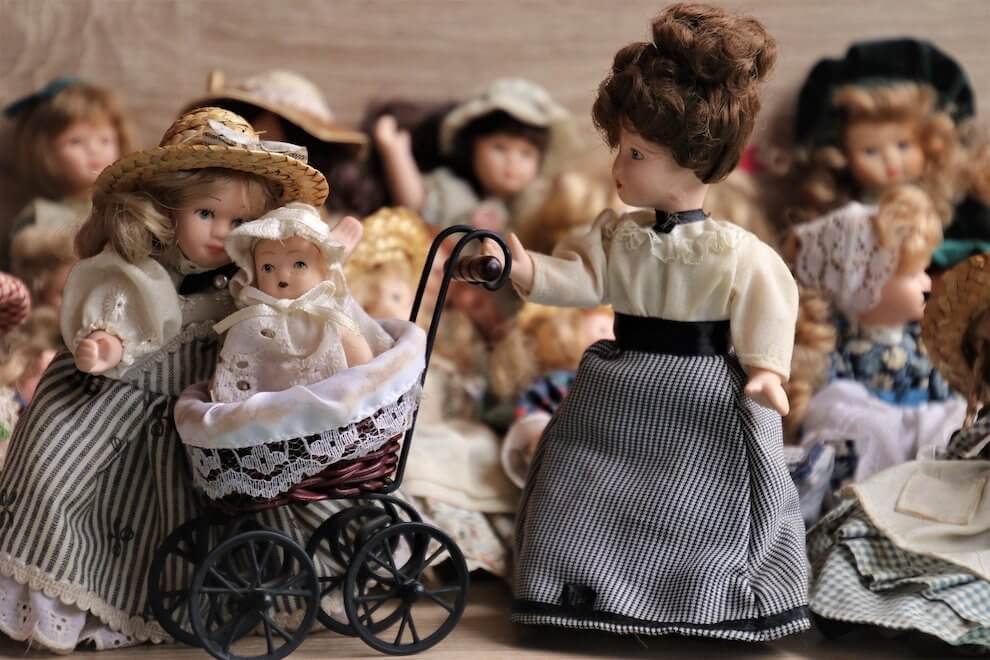Children like to play and toys are often used, but just how do children and toys make up the basis for the most formative year? Throughout history, toys were a reflection of the cultural and contextual aspects of life.
They were, and still are, tools. Toys help children interact with the world and learn to live in society as they grow up. There are a variety of toys built throughout the eons. Some by adults and many by kids themselves. As such some toys are made of a variety of materials from wood and paper to clay or plastic.
Imitating life and parents
It is known that children learn by imitating adults. Recent archaeological research into children’s lives in the past suggests that they played with miniature tools. They would resemble tools that their parents used in everyday life.
In some cases, it may be difficult to accurately identify toy tools from ceremonial ones. But on closer inspection, actual prehistoric toys have been found in the form of smaller weapons, baskets, or tools.
Clay or wood figurines were also uncovered. These suggest children or adults modeled toys to resemble the world they lived in and the animals they encountered.
Children and toys in antiquity
Apart from playing with sticks, stones, or mini adult tools, children in ancient times played with some more elaborate toys. In the Indus Valley, string-pulled carts and animals have been unearthed, fashioned out of stone, sticks, and clay.
Ancient Egyptians created dolls for their children, that had moveable limbs and wings. Egypt is one of those cultures where archaeologists have a difficult time identifying ceremonial artifacts from toys. Especially when uncovered from tombs since Ancient Egyptian funeral rites focused on the afterlife and ritual objects.
Ancient Greek and Roman children spend time playing with terracotta dolls, toy weapons, and yo-yos. It was customary to offer these child playthings as a sacrifice to the gods upon reaching adult life.
Modern concerns and the advent of consumerism
As the industrial revolution progressed human technological advancement also brought a slew of new innovative toys. The jigsaw puzzle invented in 1767 helped children learn geography as the puzzles themselves featured various geographic locations.
Children from the upper classes played with rocking horses. It was believed to help them develop a sense of balance for when they will ride actual live horses.
Children often played with hoops which expanded their hand to eye coordination. Educational purposes were a factor in designing certain games and toys for this period. As in previous ages, the growth of young minds seems to be constant. Along with puzzles and card games, other intriguing toys were made. Kaleidoscopic magic lanterns depicting flora, fauna, and famous buildings around the world were a few examples.
The industrial revolution and toys
The industrial revolution also crystallized consumerism with more products being developed, innovated, and sold for profit. This in turn extended to manufacturing more colorful toys.
In the Victorian age, Christmas became increasingly popular and the celebrations included placing toys under the Christmas tree for children. Lead-painted toys in combination with small children that have a habit of licking and nibbling objects they play with. This ultimately poisoned and damaged their nervous system as they grew.
Contemporary ideologies around children and toys
Recent years saw a boom for the toy industry with even more new designs and innovative ideas. The discovery of plasticine in 1897 by William Harbutt was quite an innovation.
With this ever-greater production and advertisements to appeal to young children, new problems arise that concern manipulation of young minds. Apart from that, toys have become a staple in popular culture as fans buy toys for collection purposes.
The influence of toys
There is much to be said about the influence of toys on children. Like the fact that society often swoops in to interject some norm to fit an agenda. This is evident in the way in which some toys may be labeled as girly.
The baby doll comes to mind, a doll seemingly geared to project the idea of women as primary childcarers. Or the Barbie doll with impossible body standards that creates a dissociation in young girls’ minds about healthy body image.
On the other, male-centered toys come in the shape of toy soldiers, tanks, or trains as if to encourage aggression.
Pushing such division between genders is not healthy and can damage people’s perspective on life. Playtime should be about child activity with fewer societal interferences from adult views.
Tiny tools and weapons in antiquity suggest it helped teach certain adult activities needed in adulthood, like hunting. Getting kids acquainted and comfortable with using toy tools acted as a form of learning. It integrated them slowly into the household chores and responsibilities.
Progressively throughout the years, toys and playtime turned their attention to a different kind of education. It did not involve crafting tools and weapons but became more about slotting children into certain societal norms. It could also teach them morals and expand their vocabulary.
Arriving at the threshold of modern sensibilities, the educational values of using toys are not to be ignored. But at the same time, empathy and inclusivity are also attitudes that must be embraced.



Leave a Comment